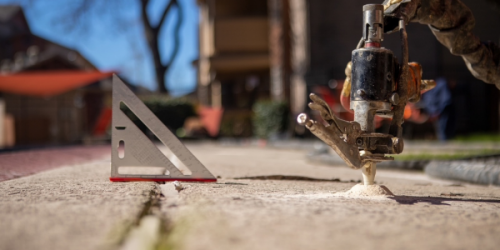Q&A Forums
Latest Conclusion about Attics and Crawl Spaces Post New Topic | Post Reply
| Author | Comments |
|---|---|
|
Doug Commette
Posted: Mar 28, 2008 10:28 PM
|
Latest Conclusion about Attics and Crawl Spaces
After attending an awesome presentation by Roger Morrison at the recent SPFA show in San Diego, there was much discussion afterwards about the use of ignition barriers in attics and crawl spaces.Although I will not attempt to quote the building codes word for word (I hope the rest of you do), most of the discussion revolved around when to use an ignition barrier or not. Much of the discussion hinged upon whether the attic was/is described as “a space entered only for the service of utilities.” Whether there were actual "utilities" in the area or not, discussion pointed to the fact that if there was access, utilities could potentially be added later by the building owner, and therefore the prudent approach was to use an ignition barrier. An added step and and added cost - but a path to greater, safer product with better results. Your thoughts? |
|
Robert Webster
Posted: Mar 29, 2008 10:30 AM
|
A lot of customers request unbiased information. What are some direct links to sites on these subjects and reports on each. Including vented and unvented attics. Also where exactly to find these things in building codes. Didn't MN just remove unvented attics from their code??? This post could be a great reference tool for people to find facts about SPF, direct quotes from building code sections, and perhaps case study references. |
|
Gerry Wagoner
Posted: Apr 03, 2008 05:31 PM
|
Roger is a great guy, and pretty conservative in his counsel. og |
|
Robert Webster
Posted: Apr 13, 2008 10:17 AM
|
You can download the 2007 IECC Supplement at this link. http://www.iccsafe.org/cs/codes/2007-08cycle/2007Supplement/index.html The sections are 402 and 502 that discuss unvented attics. Does anyone have the ORNL report, or any other reports for unvented attics |
|
Robert Hall
Posted: May 12, 2008 04:34 PM
|
I had the same question come up...this should settle the question... INTERNATIONAL FIRE CODE 2007 SUPPLEMENT 201.4 Terms not defined. Where terms are not defined through the methods authorized by this section, such terms shall have ordinarily accepted meanings such as the context implies. Merriam Webster=s Collegiate Dictionary, 11th Edition, shall be considered as providing ordinarily accepted meanings 3 a : PUBLIC UTILITY b (1) : a service (as light, power, or water) provided by a public utility (2) : equipment or a piece of equipment to provide such service or a comparable service Regards, Robert |
|
Ernie Slaughter
Posted: Jun 05, 2008 11:08 PM
|
I personally think the whole thing stinks. Why does everyone want to tip toe around the subject and just call it what it is - "bull crap". Why can't we get a straight answer on this topic once and for all. I have NEVER seen any applicator spray an ignition barrier on any kind of foam in the attic or crawl space. If you can put cotton, fiberglass or recycled in the attic there is not reason we have to coat foam with ignition barriers...we need to FIGHT THIS DUMB CODE TO DEATH as members of SPFA. Join SPFA, pay your dues and lets fight this garbage!!! |
|
Doug Commette
Posted: Jun 18, 2008 09:20 PM
|
I too have rarely seen an ignition barrier mandated in the attic or crawl space. It appears it is up to local interpretation at this point. |
|
Posted: Jun 18, 2008 10:01 PM
|
Hi, I also agree that the codes are getting a little out of hand. On the other hand it sure sounds and looks like most of these codes you are hearing about may be inforced in the near future. make sure your supplier is up to date with all the testing and credintials.. i do know LaPolla just came out with an approve UL passed Ignition to Barrier coating that is extremly easy to work with.. Check thier website and click on product TF 9000. |
|
philip mullins
Posted: Jul 01, 2008 01:01 AM
|
squeaky wheel gets the grease! the more y'all scream the sooner we all will be ... how did foam dude put it? shoulder, aim, fire! |
|
Jim Coler
Posted: Jul 03, 2008 12:23 AM
|
So you were at the SD conference in Roger's presentation? Well, what did you think when he refused to answer the question, "Do all spray foams need an ignition barrier?". His answer - after a long ho-hum -pause- -ho-hum, "I refuse to comment". Well, it's interesting that he works for Demilec(Correction:not Demilec -NCFI) and they are also getting into the Intumescent paint business. So, my word of caution is don't take even Roger's word as gospel, because he didn't have the guts to say it as it is, or his pocket was getting padded too much for him to say the truth. The truth is, some foam have passed the SWRI crawl and attic test to be left uncovered in attics and crawlspaces without needing an ignition barrier. This whole issue is a political agenda gone wild. There are far too many people who wnat to keep the codes restrictive because they benefit from product sales.If you do the research on the differences between thermo-plastic foams and thermo-set foams, it's huge, but the codes lump all foams together and make it very restrictive because of the weakest links. It's like saying that all cars are unsafe to drive at speeds over 50mph, because a model T is not safe at that speed. When you look at some of the foams out there and the flame spreads and smoke developments, they are under that of exposed yellow pine but that's what we build with and leave exposed all the time. How does that make any sense - we add a sacrificial material which protects the structural members but can't leave it exposed and they say we're better off leaving the structural members exposed. Just political agendas being played out and I could go on and on but I'll save it for later if someone wants to hear it. |
|
Posted: Jul 28, 2008 10:30 PM
|
This potential code change is a load of crap! I just sprayed a house that was recently struck by lightning and caught fire. The Fire started in the attic and never left the attic. The reason; the top of the ceiling had previously been sprayed with foam when the house was built. All the foam was still intact it never melted, dripped, ignited etc. The Fire Inspector who looked at the house stated "If the spray foam would not have been in the attic the house would have burned to the ground". The house had typical water damage etc and the homeowners are currently living in it today. He also commented that people who put Cellulose or any other paper insulation in their houses are crazy. He stated that the Fire Retardant material used with those insulations dissappears after ~3 years. As far I am concerned this is an attempt by other manufactures to contrive ideas for limiting the expansion of Spray Foam. It should be criminal given the state our country is in from an energy standpoint. |
|
Emory
Posted: Jul 29, 2008 09:31 AM
|
roger does not work for demilec he works for ncfi. |
|
Jim Coler
Posted: Aug 12, 2008 10:45 AM
|
We too had a customer who had a lightning strike fire last month and it was contained to a 6"x2' area because the roof deck was sprayed with open cell foam. The firemen opened up the cathedral ceiling back to a 3'x8' area and pulled out some of the insulation in the overhaul process, but the lighting followed an electric line which is why it spread as far as it did. Very minimal damage considing that ALL electrical appliances were fried and it was a direct hit on top of a hill which is very difficult for the fire department to get to. I'm sure it took the local Vol. boys a good 10-15 minutes from the time they got the call before they got water on it. This is not an uncommon length of time and is very reasonable since the volunteers need to get their pants on out of bed, drive to the fire station, drive the truck, set up the hoses and then put it out. Another great testimony for spray foam in the fire arena - now if we can only get someone other than ourselves to listen and put the political agendas aside. |
|
Paul Covert
Posted: Jan 14, 2011 10:38 PM
|
I sprayed a house a few years ago, and a fire started in the garage before the homeowner moved in. The fire inspector, builder, and homeowner all agreed that the foam restricted the fire to the garage, the rest of the house was practically undamaged. |





























